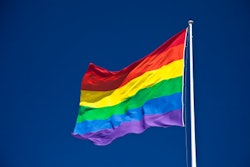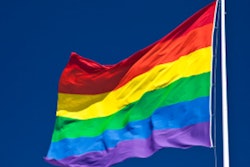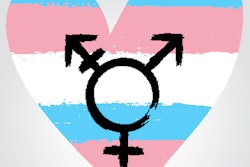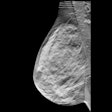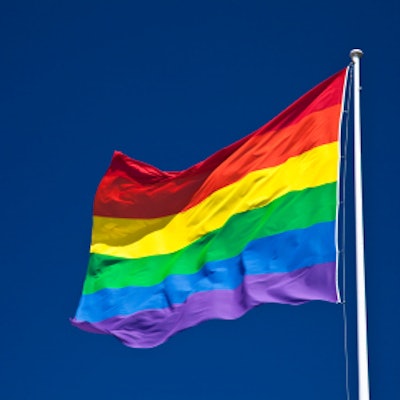
Are lesbian and bisexual women less likely to get mammograms? Not necessarily. While white bisexual women were significantly less likely to have a recent mammogram, Black bisexual women were far more likely to have had a mammogram in the past 12 months, a recent LGBT Health study found.
The study, which was published on July 13, included data from more than 45,000 women in the U.S. who identified as heterosexual, bisexual, or lesbian. The findings emphasize that race/ethnicity and socioeconomic status both play a role in whether some groups of sexual minorities may be less -- or more -- likely to undergo mammography.
"Sexual orientation identity disparities in receiving a mammogram in the past year differed in relation to race/ethnicity among white, Black, and Latina U.S. women," wrote the authors, led by Madina Agénor, an assistant professor of race, culture, and society at the Tufts University Department of Community Health.
The authors compared breast cancer screening rates among women who participated in the 2013 to 2017 U.S. National Health and Nutrition Examination Surveys. The participants all identified as lesbian, bisexual, or heterosexual and were between the ages of 40 and 75 at the time of the survey.
Out of the 45,031 participants, 58% underwent a mammogram within the past year. Black bisexual women were the most likely group to undergo a breast cancer screening, while Latina lesbian women were the least likely group to have had a recent mammogram.
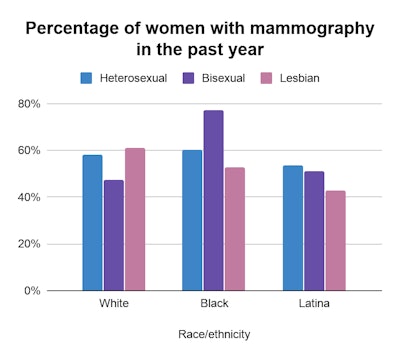
Overall, there was a statistically significant relationship between the odds of receiving a mammogram in the past year and sexual orientation and race/ethnicity. However, the findings varied greatly among different cohorts of women.
Among white women, bisexual women were significantly less likely than heterosexual women to have had a recent mammogram. Bisexual women also had lower odds of having a recent mammogram, but that finding fell out of statistical significance when the authors adjusted for socioeconomic factors.
"Differences in marital status (which confers access to economic and healthcare resources that may facilitate breast cancer screening) between the two groups may underlie this observed disparity," the authors noted.
Similarly, Latina lesbian women were less likely than Latina heterosexual women to have had a recent mammogram. Although this group had lower odds of recent mammography, the findings didn't reach statistical significance, which the authors attributed to the small sample size.
In contrast, Black bisexual women were significantly more likely than Black heterosexual women to have a mammogram in the past 12 months. This group also had higher odds of having a recent mammogram -- even after accounting for other factors.
"It is possible that the adjusted odds of annual mammography were significantly higher among Black bisexual women relative to their heterosexual counterparts because healthcare providers were more likely to recommend screening to this population at especially elevated risk of breast cancer," the authors wrote.
The authors noted more studies are needed in this research area, particularly ones that look at sexual orientation disparities on an absolute scale. They also called for new, larger studies on LGBTQ women whose races/ethnicities were not large enough to include in this study, notably Asian, Native American, and multiracial women.
"Our nationally representative findings will help inform future research and the development of tailored interventions that facilitate mammography and ultimately help promote equity in breast cancer outcomes among the U.S. women at the intersection of both sexual orientation and heterosexism and race/ethnicity and racism," the authors wrote.




